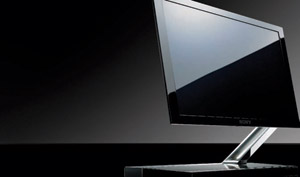In-Store Digital Media Enablers
2011? Well, it’s almost summer’s end, which means that most major brands are either winding up 2011 marketing plans or are deep in the trenches working on them. This means that marketing at-retail plans, many of them involving technology, are also in the works.
With this in mind, we recently went on a mission to try to pinpoint what emerging technologies had the most potential impact for shopper marketing plans in 2011. That translates to technology that will be available in 6 months to 1 year, not in the far-reaching future.
We of course found a plethora of options, all of which are really exciting. But, in the spirit of strategic filtering, these are the ones that stood out as “hot to watch” for their ability to address a key challenge and realistically go to market.
3D in your home and in-store: Autostereoscopic displays basically trick the viewer’s eyes so that each one sees a different image. Some do this via tiny lenses that direct images to each eye; others split the display’s light in two, creating depth. The payoff is a 3D image that requires no glasses.
The Nintendo 3DS, due out in spring of 2011, will have dual touchscreens, motion control, and autostereoscopic 3D. If this type of technology is going to be available on gaming systems, you can bet that App Store games, iPhone and iPads, and other forms of POP will soon have affordable 3D as well.

Sony’s thin OLED screen has digital signage potential.
OLED Evolution: OLED, or Organic Light-emitting Diode, is a film of organic compounds that generate their own light when electricity passes through them. OLEDs have flexible screens and their toughness make them ideal for use in many types of devices, most of which no one has invented yet. They are also green, thin, use a fraction of the power consumption of most digital screens, and display a beautifully clear picture. Their possibilities for use are endless…they can even be woven into fabric!
E-paper: E-paper, or electronic paper, has been in development for over a decade and it’s finally close to being market- ready. Unlike a conventional flat panel display, which uses a backlight to illuminate pixels, electronic paper reflects light like ordinary paper. No backlight is required and because electricity is only used once to create the contents of each page, it is also low cost and efficient.
Wireless Reworked: There are two flavors of wireless we’re watching: Wireless HD and Wireless Home Digital Interface (WHDI). Both of them promise something like WiFi for multimedia, where compatible devices (laptops, game consoles, mobile phones) will use them to locate your HDTV and magically connect everything to it over the air. Turn it on and everything that you need just works — all without cords.
WirelessHD delivers uncompressed video up to 1080p, multichannel audio, and other data at speeds up to 4 Gbps. It supposedly has a ceiling of 25 Gbps, but it will only carry up to 33 feet.
WHDI will work up to 100 feet, but only at 3 Gbps. This technology is going to be available in devices as early as late summer/ early fall.
3D Printing: 3D printing is a technology that can create a three-dimensional object with multiple layers of material. Imagine having printer at each store that lets managers download graphics and create their own signs with physical three-dimensional images objects on them. With marketready versions now available at $15,000 and DIY kits starting at $1000, you won’t have to imagine for long.
Quantum Dots: Quantum Dots are little nano particles that get excited and emit light of another frequency on displays. Manufacturers coat a lens with them, then affix it to an LED fixture. It then acts like a filter to create a warm, lovely display hue. If you are working with anything that has lights in the display, it’s a really interesting addition to create a more tantalizing, attentiongrabbing promotion.
Pico Projectors: Pico projectors have come of age and the new versions will soon be seen in iPhones, iPads, and other handheld devices. Some even project with RGB lasers (instead of white light) for better quality images. Sure, they are great for quickie presentations and slide shows, but think about how they can be used to easily project digital messages in-store.
Solar Power: No one would counter the point that one of the biggest challenges in our industry is the pain factor attached to hanging power poles in a store. Incredible advances have been made with solar power and it’s right around the corner. Apple has two pending patents on new solar collector technologies, one that slips solar cells beneath a device’s LCD screen and another that covers any portable devices without the mess of the cords and heavy solar panels. Now, imagine this technology embedded into e-paper and OLED screens — every window could go digital!
Wireless Electricity: WiTricity is the other burgeoning solution for our power pole dilemma. As out there as it may sound, it’s real and we will soon see wireless power that works up to several feet away from a base station. It works via a technology known as sharply resonant strong coupling, which generates an oscillating magnetic field that is captured and converted to electricity by a sensor in the device. Insiders tell us that we should see options for it later this year.
Voice Controlled Signage: We’ve often talked about how great it would be to walk up to a screen, ask it where to find something, and receive an immediate written, image, or voice response. If you think about the retail realities of grimy finger smudges and germ-phobic shoppers, this scenario makes a lot of sense.
When the Android phone launched in 2000, one of their marketing experiments was a campaign in Times Square that synced up with Google Search. On Black Friday, a pedestrian could dial a specific 800 number, do a Google Search by voice, and see their result (with a map to find it) right up on a giant Reuters sign. So, the technology exists to make the scenario above real…who will be first?
3D Cameras: Microsoft has been working with 3D cameras for the past year for their gaming products under the name Project Natal. Essentially, it attaches motion-sensing technology to the Xbox 360 console to observe body movements, and also uses microphone technology to listen to users. It’s capable of identifying different people in a room, and can track the movement and speech of multiple people at once. The camera sees every pixel in 3D and enables screen interaction with no handheld devices needed, making it a hyper intelligent Wii that needs no controller. Recently rebranded Kinect, we think that it has the power to radically evolve how we interact and service shoppers both in-store and at home.
This is an exciting time for any brand to seize first-market advantage with these new technologies, but they need to get on your strategy team’s radar now. We’ll be looking forward to reporting on what innovative retailer’s do with them — the possibilities are endless!
Laura Davis-Taylor is VP of global retail strategy for Creative Realities, a global experiential branding and marketing firm that specializes in creating wow environments and customer experiences. Laura is a yearly co-chair of the Digital Signage Expo, Chair of the POPAI Digital Signage Advocacy Committee, board member of The Digital Signage Experts Group, and an “expert resource” lecturer and workshop teacher. In 2007, she co-authored the first industry field book, “Lighting up the Aisle: Principles and Practices for In-store Digital Media” (http://www.lightinguptheaisle.com).

